Music, Identity, Culture and Adolescents: Bibliometric Analysis During the Research Period (2016–2025)
Abstract
1. Introduction
2. Methods
3. Results
4. Discussion
5. Conclusions
Author Contributions
Funding
Institutional Review Board Statement
Informed Consent Statement
Data Availability Statement
Conflicts of Interest
References
- Fernández, J.F.; García, M.; Gamella, D.J. Mood regulation through music in adolescence. Eur. Public Soc. Innov. Rev. 2024, 9, 1–18. [Google Scholar] [CrossRef]
- Wilska, T.A.; Holkkola, M.; Tuominen, J. The role of social media in the creation of young people’s consumer identities. Sage Open 2023, 13, 1–18. [Google Scholar] [CrossRef]
- Campo, S.S.; Requena, S.O. Música, identidad de género y adolescencia: Orientaciones didácticas para trabajar la coeducación. Epistemus. Rev. Estud. Mus. Cognición Cult. 2019, 7, 20–32. [Google Scholar] [CrossRef]
- Marí, V.M.; Bonete, B.; Ceballos, G.; Rengel, J.; Egoscozabal, M. Adolescentes y Abuso de las Tecnologías de la Información y de la Comunicación en la Provincia de Cádiz. 2016. Available online: http://hdl.handle.net/10498/18340 (accessed on 22 July 2025).
- Moreno, A. Informe Juventud en España 2012; Instituto de la Juventud: Madrid, España, 2012. [Google Scholar]
- Marín, J.S. Influencia de la música en el comportamiento de los adolescentes. Cienc. Acad. 2023, 4, 1–11. [Google Scholar] [CrossRef]
- Welch, G.F.; Biasutti, M.; MacRitchie, J.; McPherson, G.E.; Himonides, E. The Impact of Music on Human Development and Well-Being. Front. Psychol. 2020, 11, 1246. [Google Scholar] [CrossRef]
- Díaz, C.F.; Montes, M.D.L.Á. Músicas populares, cognición, afectos e interpelación: Un abordaje socio-semiótico. Oído Pensante 2020, 38–64. Available online: https://ri.conicet.gov.ar/bitstream/handle/11336/141045/CONICET_Digital_Nro.583781f1-21f2-4cfa-8edf-83ceda5f4cf7_A.pdf?sequence=2&isAllowed=y (accessed on 12 June 2025). [CrossRef]
- Oriola, S.; Gustems, J.; Filella, G. Las bandas y corales juveniles como recurso para el desarrollo integral de los adolescentes. Revi. Electron. Complut. Investig. Educ. Music. 2018, 15, 153–173. [Google Scholar] [CrossRef]
- Oriola, S.; Gustems, J. Música y emoción, un binomio inseparable. Rev. Int. Educ. Emoc. Bienestar 2021, 1, 11–24. Available online: http://ri.ibero.mx/handle/ibero/5954 (accessed on 4 July 2025). [CrossRef]
- Thomas, K.S. Music Preferences and the Adolescent Brain: A Review of Literature. Update Applicat. Res. Music Educ. 2016, 35, 47–53. [Google Scholar] [CrossRef]
- Miller, D.I.; Lauer, J.E.; Tanenbaum, C.; Burr, L. The development of children’s gender stereotypes about STEM and verbal abilities: A preregistered meta-analytic review of 98 studies. Psychol. Bull. 2024, 150, 1363. [Google Scholar] [CrossRef]
- Castillo-Mayén, R.; Montes-Berges, B. Análisis de los estereotipos de género actuales. An. Psicol. 2014, 30, 1044–1060. [Google Scholar] [CrossRef]
- Dobrota, S.; Reić, I. Music preferences with regard to music education, informal influences and familiarity of music amongst young people in Croatia. Br. J. Music Educ. 2017, 34, 41–55. [Google Scholar] [CrossRef]
- Drovenik, T.; Blažić, M.; Kovačič, B. Influence of Factors on the Development of Outstanding Musical Talent—A Case Study. Pedagoš. Obz. 2020, 35, 54–70. Available online: https://www.researchgate.net/publication/366185484_Influence_of_Factors_on_the_Development_of_Outstanding_Musical_Talent_-_a_Case_Study (accessed on 23 June 2025).
- Perić, D.; Lazić, S.; Matović, M. Popular Music in Young People’s Social and Cultural Values Formation. Pedagoš. Obz. 2021, 36, 120–133. Available online: https://www.dspo.si/index.php/dspo/article/view/47 (accessed on 23 June 2025).
- Athanasopoulos, G.; Tan, S.L.; Moran, N. Influence of literacy on representation of time in musical stimuli: An exploratory cross-cultural study in the UK, Japan, and Papua New Guinea. Psychol. Music 2016, 44, 1126–1144. [Google Scholar] [CrossRef]
- Fernández de Juan, T. Psychotherapy Music therapy for women survivors of intimate partner violence: An intercultural experience from a feminist perspective. Arts Psychot. 2016, 48, 19–27. [Google Scholar] [CrossRef]
- Stupacher, J.; Witek, M.A.; Vuoskoski, J.K.; Vuust, P. Cultural familiarity and individual musical taste differently affect social bonding when moving to music. Sci. Rep. 2020, 10, 10015. [Google Scholar] [CrossRef] [PubMed]
- Whitaker, N. Student-created musical as a community of practice: A case study. Mus. Educ. Res. 2016, 18, 57–73. [Google Scholar] [CrossRef]
- Clements-Cortés, A. Artful wellness: Attending chamber music concert reduces pain and increases mood and energy for older adults. Arts Psychother. 2017, 52, 41–49. [Google Scholar] [CrossRef]
- Flores, K.; Van Niekerk, C.; Le Roux, L. Drumming as a medium to promote emotional and social functioning of children in middle childhood in residential care. Music Educ. Res. 2016, 18, 254–268. [Google Scholar] [CrossRef]
- Kim, J.; Stegemann, T. Music listening for children and adolescents in health care contexts: A systematic review. Arts Psychother. 2016, 51, 72–85. [Google Scholar] [CrossRef]
- Soley, G.; Spelke, E.S. Shared cultural knowledge: Effects of music on young children’s social preferences. Cognition 2016, 148, 106–116. [Google Scholar] [CrossRef]
- Tan, S.L.; Cohen, A.; Cohen, A.J.; Lipscomb, S.D.; Kendall, R.A. The Psychology of Music in Multimedia; University Press: Oxford, UK, 2012. [Google Scholar]
- Ovchinnikova, Y.S. Intercultural competence in modern education: Experience of building a music-orientated model. Music Art Educ. 2022, 10, 27–44. [Google Scholar] [CrossRef]
- Westerlund, H.; Karlsen, S.; Partti, H. Visions for Intercultural Music Teacher Education; Springer Open: Londres, Inglaterra, 2020. [Google Scholar] [CrossRef]
- Santiago, G.; Cortezo, A.; Corpus, M.L.A. Artificial Intelligence and the Integration of industrial Revolution 6.0 in Ethnomusicology: Demands, Interventions and Implications. Musicologist 2024, 8, 75–107. [Google Scholar] [CrossRef]
- Beckles, R. Migration, music and the mobile phone: A case study in technology and socio-economic justice in Sicily. Ethnomusicol. Forum. 2021, 30, 226–245. [Google Scholar] [CrossRef]
- Paschalidou, S. Technology Mediated Hindustani Dhrupad Music Education: An Ethnographic Contribution to the 4E Cognition Perspective. Educ. Sci. 2024, 14, 203. [Google Scholar] [CrossRef]
- Torres, M.; Carlo, G.; Davis, A.N. The Associations Between Culture-Related Stressors and Prosocial Behaviors in U.S. Latino/a College Students: The Mediating Role of Cultural Identity. Adolescents 2025, 5, 4. [Google Scholar] [CrossRef]
- Nettl, B. The Study of Ethnomusicology: Thirty-Three Discussions; University of Illinois Press: Champaign, IL, USA, 2015. [Google Scholar]
- Bracknell, C.; Barwick, L. The Fringe or the Heart of Things? Aboriginal and Torres Strait Islander Musics in Australian Music Institutions. Musicol. Aust. 2020, 42, 70–84. [Google Scholar] [CrossRef]
- Crossman, A. Sociological Definition of Popular Culture: The History and Genesis of Popular Culture. Retrieved on 29 April 2025. Available online: https://www.thoughtco.com/popularculture-definition-3026453 (accessed on 8 August 2025).
- Kumar, A. A Study of Popular Culture and its Impact on Youth’s Cultural Identity. Creat. Launcher 2022, 7, 150–157. [Google Scholar] [CrossRef]
- Hormigos, J. Estudio de los factores comunicativos que definen la percepción social de la música en la juventud española. El Oído Pensante 2023, 11, 32–58. Available online: https://dialnet.unirioja.es/servlet/articulo?codigo=8889120 (accessed on 27 June 2025). [CrossRef]
- Rodríguez, E.; Ballesteros, J.C. Jóvenes, Ocio y TIC. Una Mirada a la Estructura Vital de la Juventud Desde los Referentes del Tiempo Libre y las Tecnologías; Centro Reina Sofía Sobre Adolescencia y Juventud, FAD: Madrid, España, 2019. [Google Scholar]
- Aria, M.; Cuccurullo, C. Bibliometrix: An R-tool for comprehensive science mapping analysis. J. Informetr. 2017, 11, 959–975. [Google Scholar] [CrossRef]
- Granado, F.S. Aplicación de la ley de Lotka en los trabajos de ascenso del personal académico de la universidad nacional abierta. En el período 2000–2004. Rev. Pensam. Academ. 2019, 2, 34–42. [Google Scholar] [CrossRef]
- Cremades-Andreu, R.; García-Sanz, J. Proyectos Musicales En Secundaria: Una Herramienta Para Facilitar la socialización en Adolescentes. Prax. Saber 2022, 13, e13058. [Google Scholar] [CrossRef]
- Parella, S.; Contreras, P.; Pàmies, J. La reconstrucción de la identidad musulmana de las jóvenes de ascendencia marroquí con estudios superiores en Cataluña. Rev. Estud. Soc. 2022, 1, 39–57. [Google Scholar] [CrossRef]
- Cremades, R.; Lorenzo, O.; Turcu, I. Raï music as a generator of cultural identity among young magrebies. Int. Rev. Aesthet. Sociol. Music. 2015, 46, 175–184. [Google Scholar]
- Mohammadzadeh, M.; Alizadeh, T.; Awang, H.; Mohammadzadeh, Z.; Mirzaei, F.; Stock, C. Knowledge, Perspectives, and Priorities Regarding Self-Care Activities: A Population-Based Qualitative Study among Iranian Adolescents. Adolescents 2021, 1, 123–137. [Google Scholar] [CrossRef]
- Fernández-Company, J.F.; García-Rodríguez, M.; Alvarado, J.M.; Jiménez, V. Adolescencia y música, una realidad positiva. In La Convivencia Escolar: Un Acercamiento Multidisciplinar a las Nuevas Necesidades; Pérez, M.C., Molero, M.M., Martos, A., Barragán, A.B., Simón, M.M., Sisto, M., Del Pino, R.M., Tortosa, B.M., Gázquez, J.J., Eds.; Dykinson: Madrid, Spain, 2020; pp. 47–59. [Google Scholar]
- Duffett, M. Understanding Fandom: An Introduction to the Study of Media Fan Culture; Bloomsbury: New York, NY, USA, 2013. [Google Scholar]
- Duffett, M. Fan Words. In Popular Music Fandom: Identities, Roles and Practices; Duffett, M., Ed.; Routledge: New York, NY, USA, 2014; pp. 146–164. [Google Scholar]
- Smith, G.D.; Moir, Z.; Brennan, M.; Rambarran, S.; Kirkman, P. The Routledge Research Companion to Popular Music Education; Routledge: New York, NY, USA, 2017. [Google Scholar]
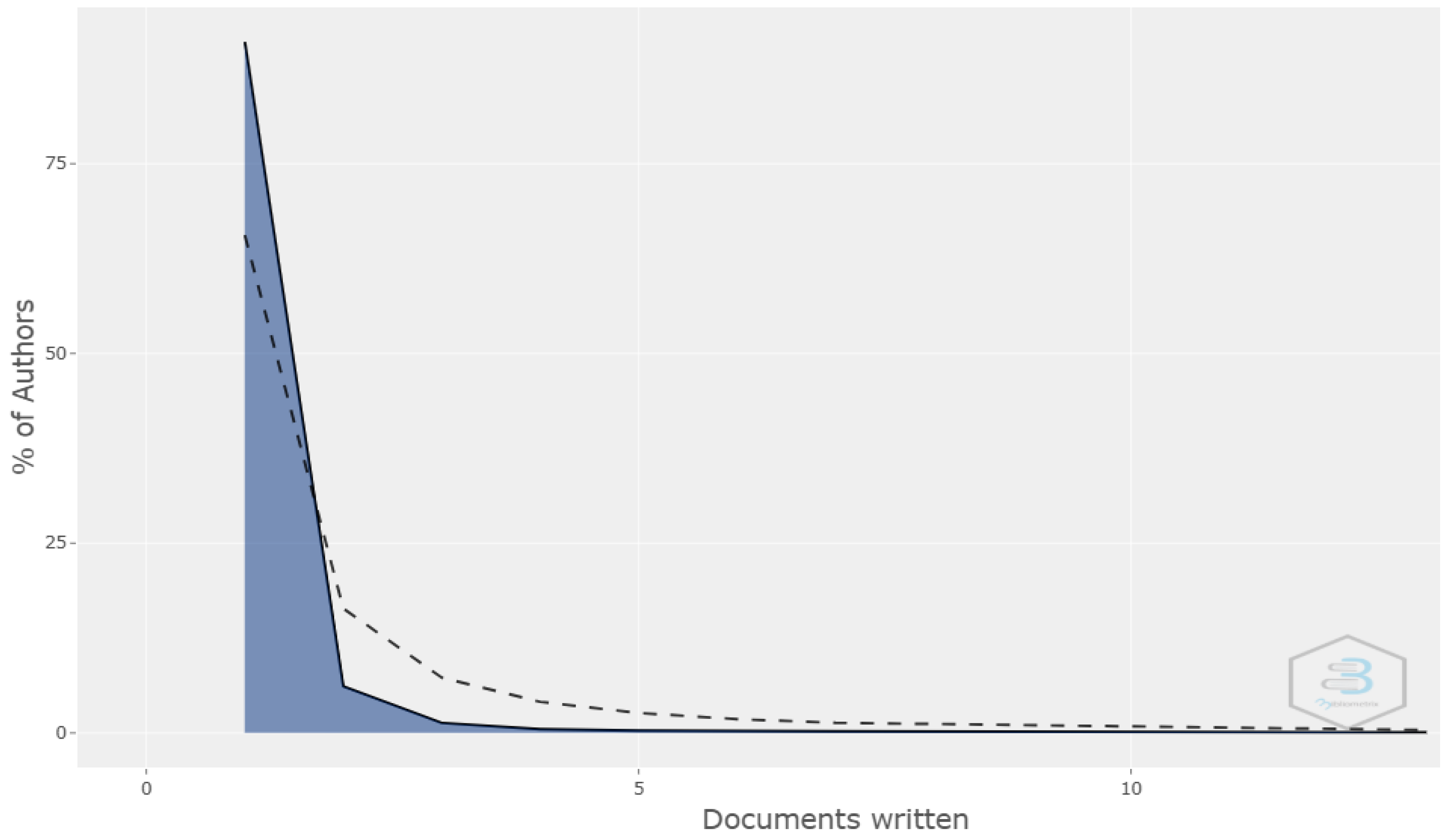

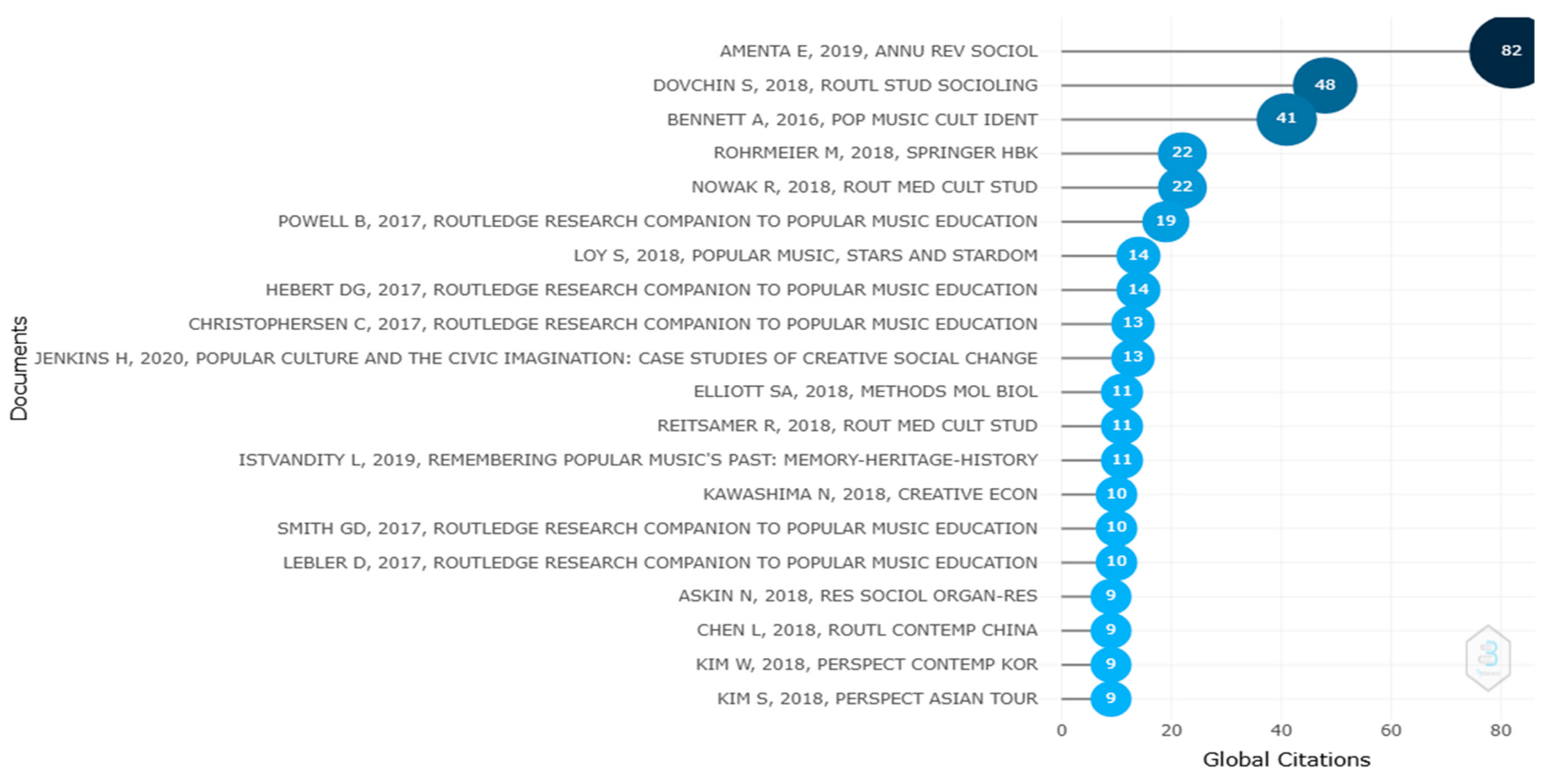


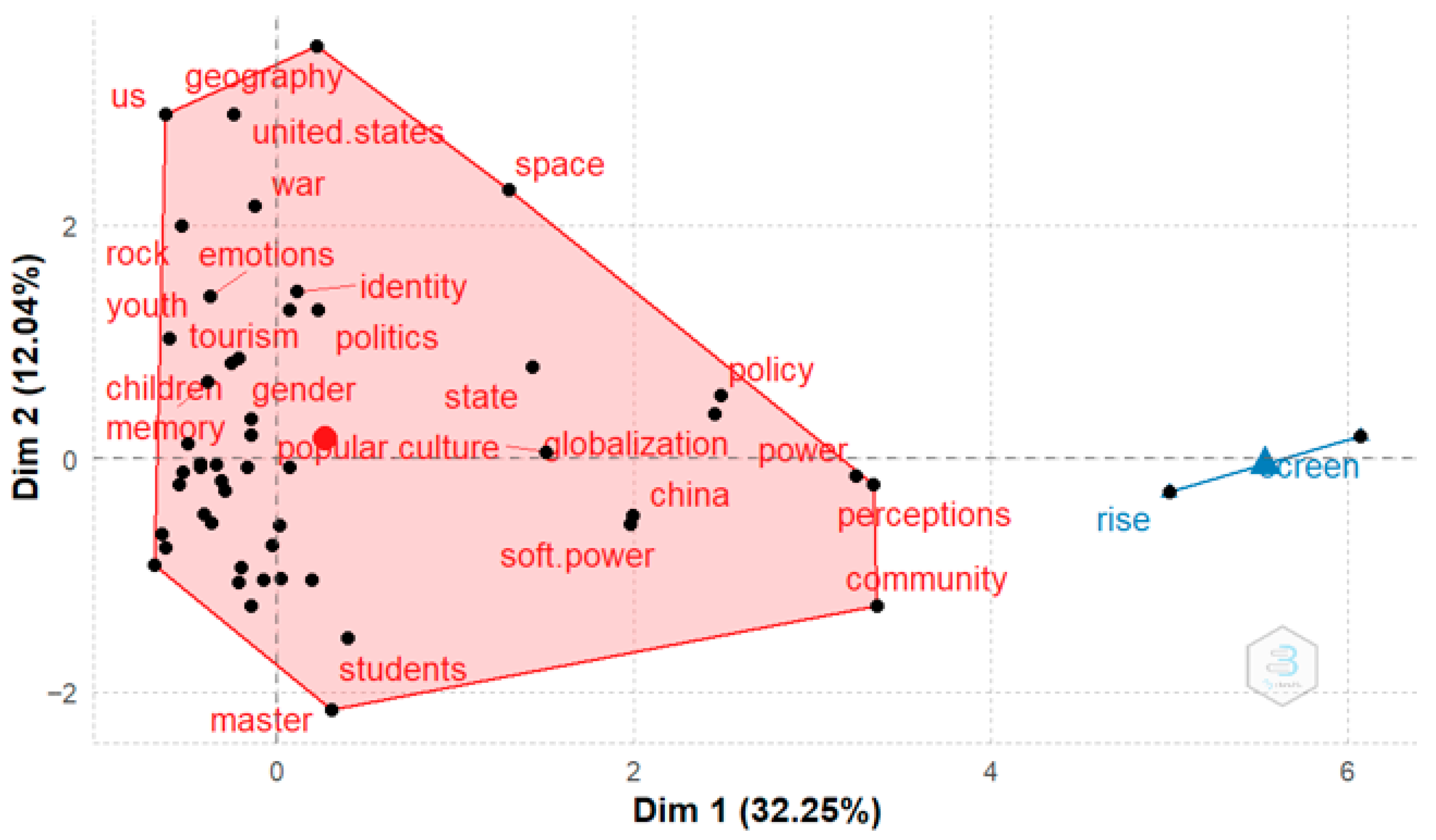






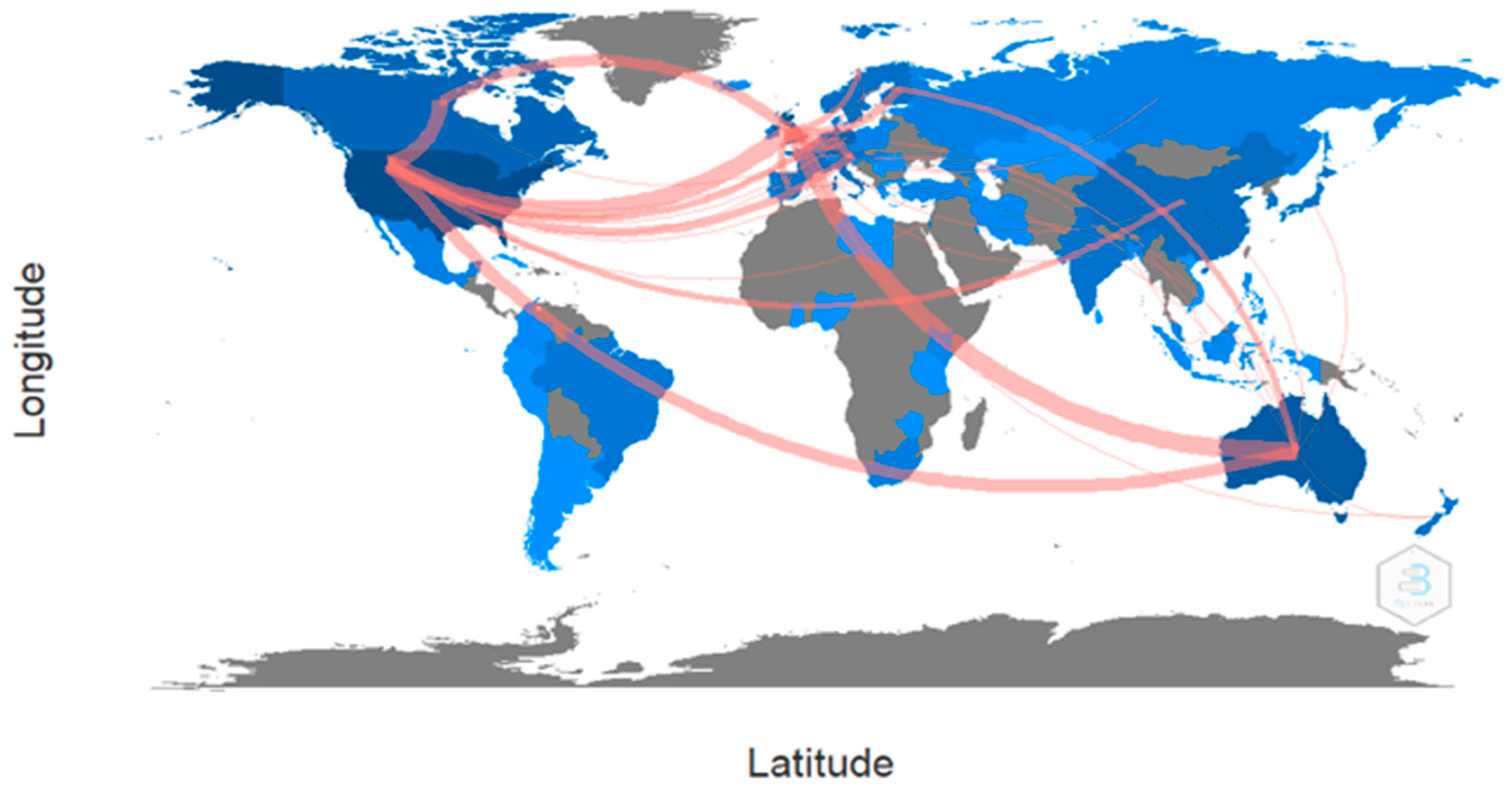
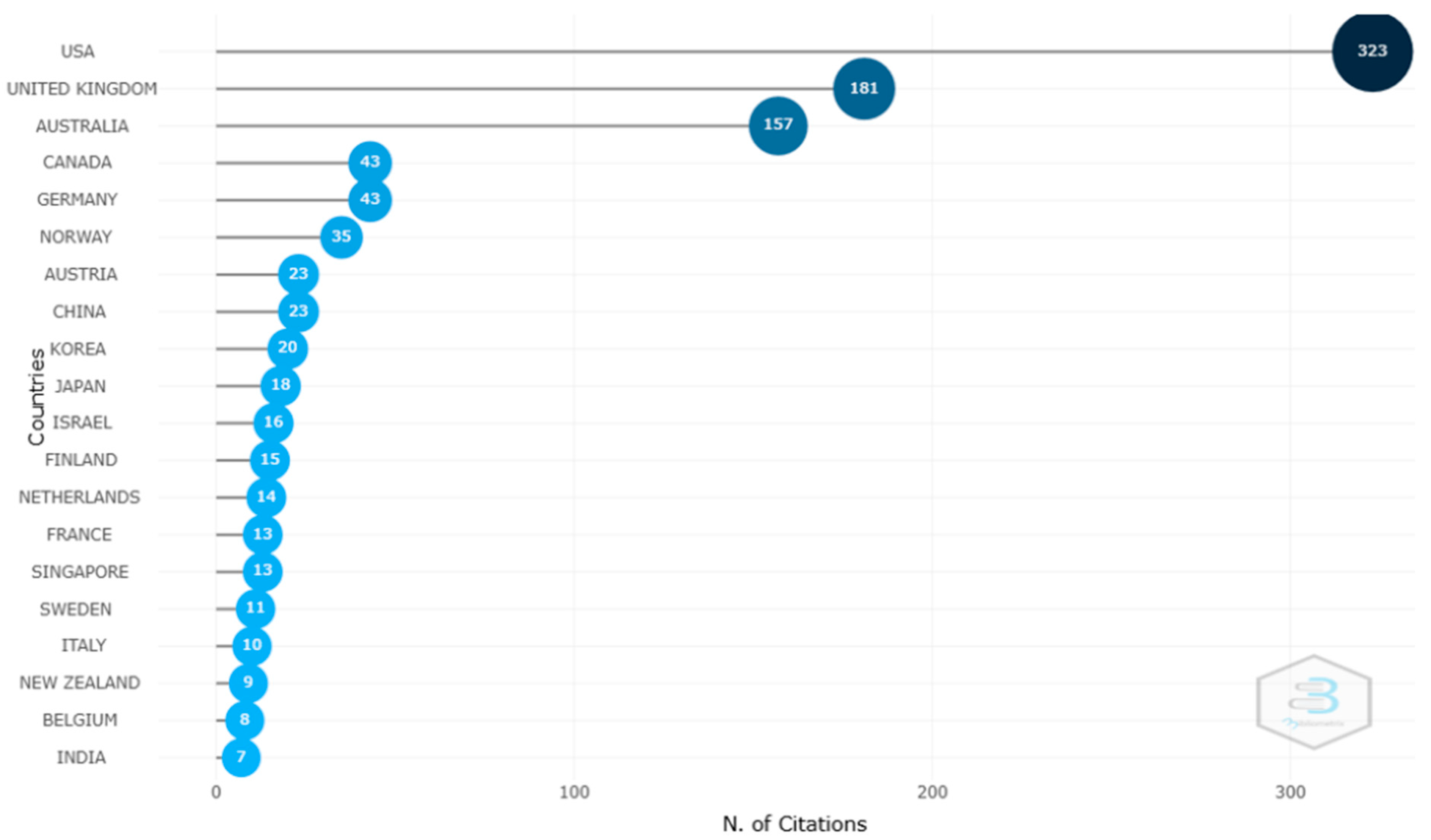
| DESCRIPTION | RESULTS |
|---|---|
| Time Interval | 2016–2025 |
| Documents (articles) | 904 |
| Sources (journals) | 611 |
| Average number of years since publication | 5.96 |
| Average number of citations per document | 1.291 |
| Average number of citations per year per document | 0.1726 |
| References | 1 |
| TYPES OF DOCUMENTS | |
| Keywords Plus | 515 |
| Authors’ keywords | 656 |
| AUTHORS | |
| Authors | 994 |
| Authors appearances | 1158 |
| Authors of single-author documents | 650 |
| Authors of multi-author documents | 344 |
| AUTHOR COLLABORATION | |
| Single-author documents | 729 |
| Documents by author | 0.909 |
| Authors per document | 1.1 |
| Co-authors per document | 1.28 |
| Autor collaboration index | 1.97 |
Disclaimer/Publisher’s Note: The statements, opinions and data contained in all publications are solely those of the individual author(s) and contributor(s) and not of MDPI and/or the editor(s). MDPI and/or the editor(s) disclaim responsibility for any injury to people or property resulting from any ideas, methods, instructions or products referred to in the content. |
© 2025 by the authors. Licensee MDPI, Basel, Switzerland. This article is an open access article distributed under the terms and conditions of the Creative Commons Attribution (CC BY) license (https://creativecommons.org/licenses/by/4.0/).
Share and Cite
Luque, R.P.; Suárez, M.L.; Gómez, M.d.C.O. Music, Identity, Culture and Adolescents: Bibliometric Analysis During the Research Period (2016–2025). Adolescents 2025, 5, 68. https://doi.org/10.3390/adolescents5040068
Luque RP, Suárez ML, Gómez MdCO. Music, Identity, Culture and Adolescents: Bibliometric Analysis During the Research Period (2016–2025). Adolescents. 2025; 5(4):68. https://doi.org/10.3390/adolescents5040068
Chicago/Turabian StyleLuque, Raquel Pascual, Mónica Luque Suárez, and María del Carmen Olmos Gómez. 2025. "Music, Identity, Culture and Adolescents: Bibliometric Analysis During the Research Period (2016–2025)" Adolescents 5, no. 4: 68. https://doi.org/10.3390/adolescents5040068
APA StyleLuque, R. P., Suárez, M. L., & Gómez, M. d. C. O. (2025). Music, Identity, Culture and Adolescents: Bibliometric Analysis During the Research Period (2016–2025). Adolescents, 5(4), 68. https://doi.org/10.3390/adolescents5040068







